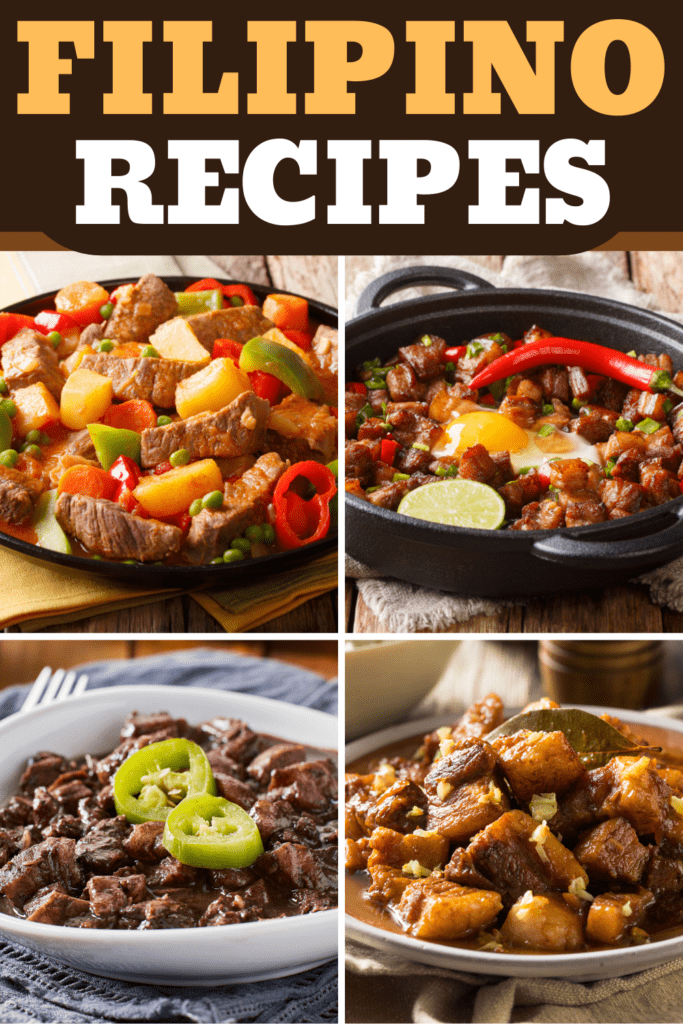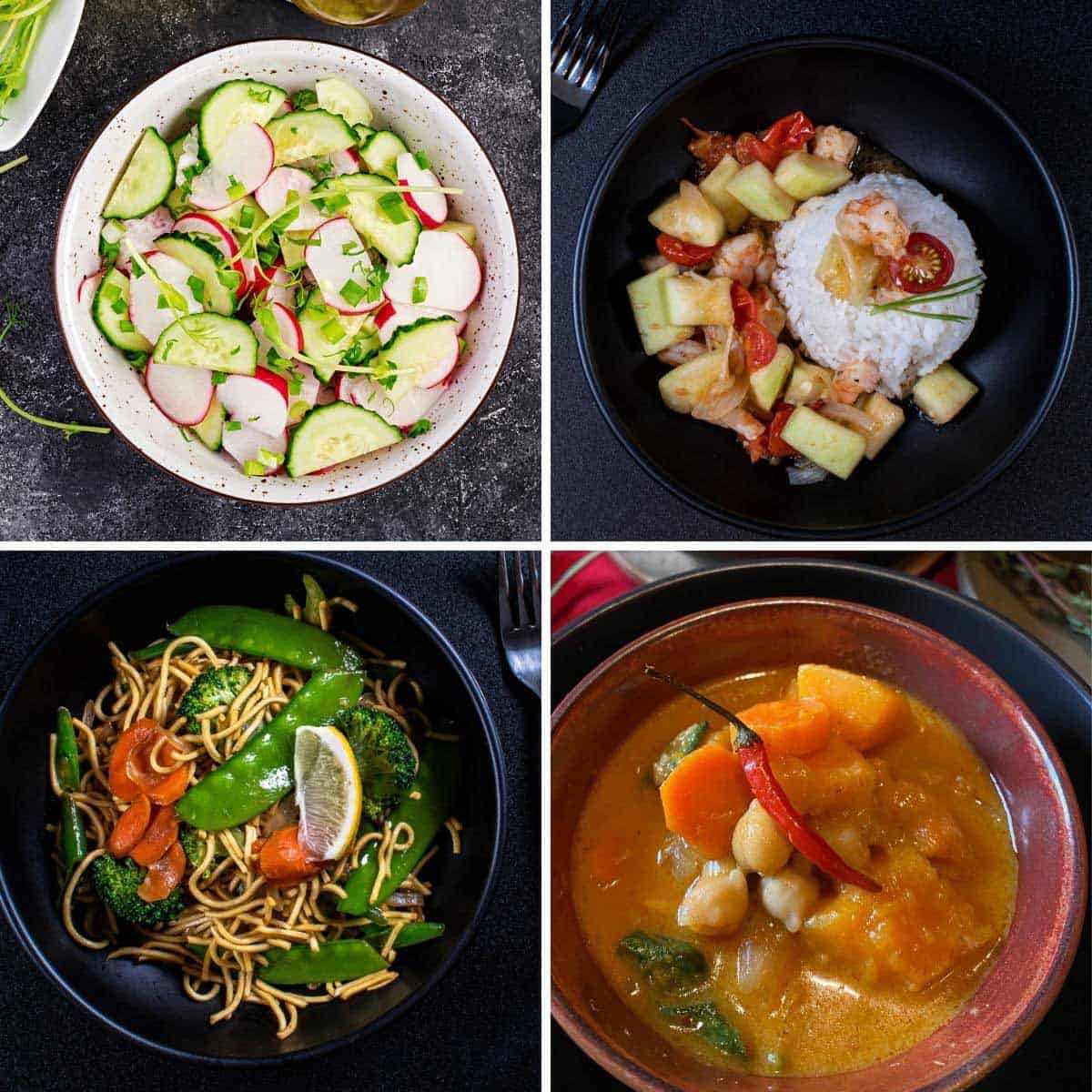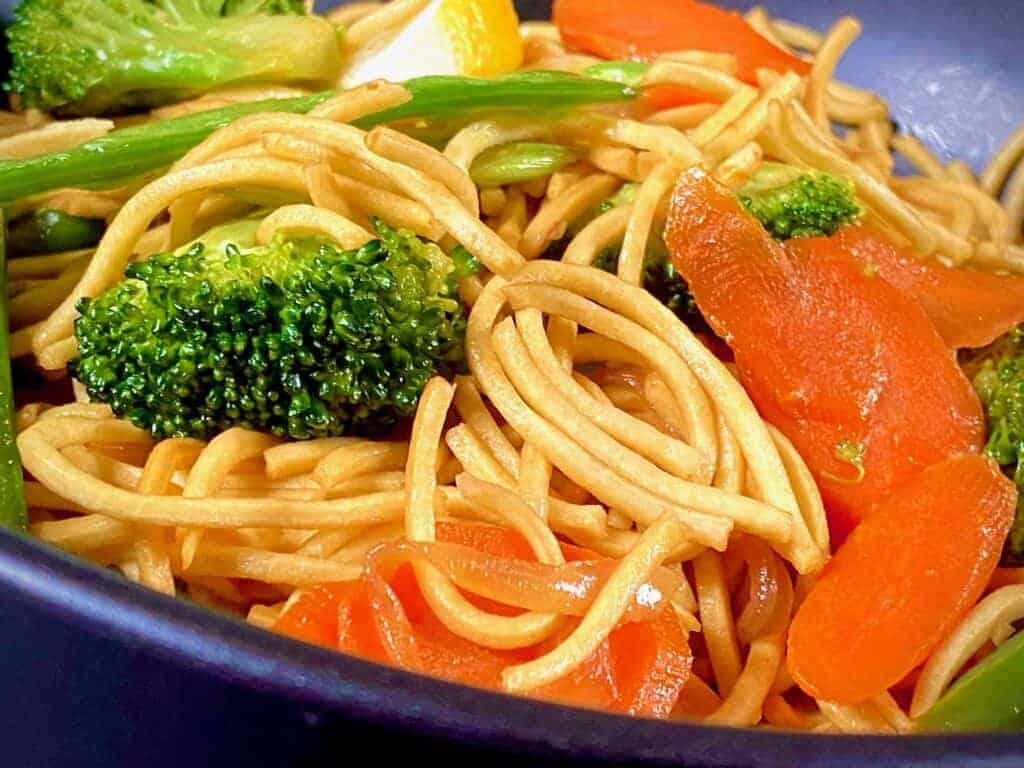Discover Unique Filipino Food Recipes from the Philippines.
Check Out the Rich Preference of Filipino Food With These Must-Try Recipes
Filipino cuisine uses a remarkable tapestry of tastes that mirror the country's abundant cultural heritage. Each meal tells a tale, from the tasty deepness of Adobo to the refreshing tang of Sinigang, welcoming cooking fanatics to discover a diverse array of tastes.
Adobo: The Iconic Dish
Adobo has become the essential recipe of Filipino food, exciting palates both in your area and abroad. This beloved meal is defined by its one-of-a-kind combination of full-flavored, sour, and somewhat wonderful flavors, achieved via a thorough marination process. Traditionally, adobo is prepared using poultry or pork, although variations exist that integrate fish and shellfish and vegetables.
The basic ingredients of adobo consist of soy sauce, vinegar, garlic, bay leaves, and black pepper, which with each other develop a rich and fragrant sauce. The cooking method generally involves simmering the meat in the sauce, permitting it to absorb the facility flavors while softening. This procedure not just enhances the taste but additionally offers as an all-natural chemical, making adobo an ideal dish for storage.
Adobo is typically served with fit to be tied rice, which matches its durable taste profile. Each region in the Philippines flaunts its very own variation, reflecting local ingredients and cooking practices. This adaptability talks with the meal's social importance and withstanding popularity. Whether enjoyed in your home or in dining establishments, adobo continues to be a staple that symbolizes the essence of Filipino friendliness, making it a must-try for anybody discovering this vibrant food.

Sinigang: A Tangy Pleasure
One more cornerstone of Filipino cuisine is sinigang, a recipe celebrated for its distinct zesty flavor. This savory soup is generally made with a selection of meats, including pork, beef, shrimp, or fish, and is identified by its sour brew, which normally stems from tamarind, environment-friendly mango, or calamansi. The equilibrium of acidity and umami creates a revitalizing comparison that is both reassuring and invigorating.
Sinigang is usually enriched with a variety of fresh veggies such as radish, eggplant, water spinach, and string beans, adding not just to the recipe's flavor profile however likewise to its nutritional worth - Filipino food recipes. Each household might have its own version, with regional variants that show local active ingredients and cultural impacts
The preparation of sinigang involves simmering the picked meat up until tender, adhered to by the addition of the souring agent and veggies. This method allows the tastes to meld wonderfully, leading to a passionate and satisfying meal. Generally offered with fit to be tied rice, sinigang symbolizes the essence of Filipino hospitality and is a precious staple, frequently appreciated during family members gatherings and unique celebrations.
Lechon: The Festive Roast
Lechon, frequently considered the focal point of festive Filipino events, is a delicious roasted pig understood for its crunchy skin and tender, delicious meat. This famous dish is deeply rooted in Filipino culture, frequently enhancing tables during birthday celebrations, weddings, and considerable holidays. The preparation of lechon is an art type, needing careful focus to information, from marinading the pig with a mix of spices to guaranteeing an even roast over an open flame or in a specialized oven.
Usually, the pig is experienced with a combination of salt, pepper, and local herbs, imparting a rich flavor that complements its natural juiciness. The cooking process can take several hours, throughout which the skin changes right into a flawlessly crunchy layer, producing a fascinating comparison to go to website the delicious meat beneath.
Lechon is commonly offered with a side of liver sauce or vinegar dip, enhancing its tasty profile. It is not simply a meal yet a common experience, as friends and families collect around to enjoy this superb recipe. The aroma of lechon floating with the air is an invitation to indulge, making it a beloved icon of party in Filipino society.
Kare-Kare: Oxtail Stew
Kare-Kare, an abundant and hearty oxtail stew, holds a special area in Filipino culinary custom, commemorated for its one-of-a-kind taste profile and dynamic presentation (Filipino food recipes). This meal is identified by its luscious peanut sauce, which is created by grinding roasted peanuts or making use of peanut butter, giving it a creamy and nutty significance. Typically, kare-kare features tender oxtail, although variations may include tripe or see this beef shank, each adding to the stew's deepness of flavor
The preparation of kare-kare usually includes slow-cooking the meat until it ends up being incredibly tender. The enhancement of a variety of vegetables, such as eggplant, string beans, and banana hearts, not only enhances the stew's nutritional worth however also its visual allure. Served with a side of bagoong, or fermented shrimp paste, kare-kare perfectly balances its abundant, savory notes with a salted kick.
Typically appreciated throughout unique events and household celebrations, kare-kare personifies the essence of common eating in Filipino society. Its delightful complexity and comforting heat make it a dish that is not only pleasing to the taste buds yet additionally stimulates a feeling of fond memories for many Filipinos worldwide.

Halo-Halo: A Dessert Treat
Halo-halo is frequently considered the quintessential Filipino dessert, commemorated for its vivid mix of structures and flavors - Filipino food recipes. This wonderful concoction is a perfect representation of the Philippines' abundant culinary heritage, incorporating numerous active ingredients that integrate to develop a revitalizing and indulgent reward, specifically throughout heat
At its core, halo-halo features crushed ice covered with a range of components, consisting of sweetened beans, jellies, fruits like bananas and jackfruit, and velvety Extra resources leche flan. A charitable scoop of ube (purple yam) gelato crowns the blend, including an abundant, creamy flavor that boosts the dessert. The layering of components not only develops a banquet for the eyes however likewise offers an intricate interplay of sweet taste and structure in every spoonful.
Generally served in a glass, halo-halo urges restaurants to blend the contents prior to appreciating. This common aspect enhances the dessert's charm, as everyone's version can be distinctively customized. Whether taken pleasure in as a street food extravagance or a special celebration reward, halo-halo stays a beloved symbol of Filipino society, inviting everyone to explore its delightful and varied tastes.
Final Thought
